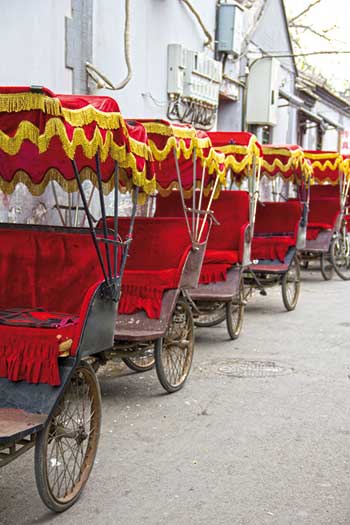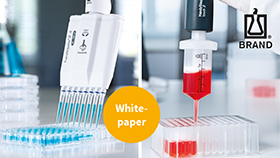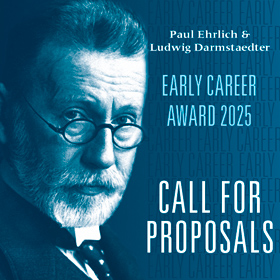Majulah Singapura
From Fishing Village to Asia’s Biopolis (Pt II)
Career strategies for young European scientists
by Ralf Schreck, Labtimes 04/2013
Page 1 | Page 2 | Page 3
NUS – Singapore’s flagship university
The National University of Singapore (NUS) has its roots in a small medical college that started with a group of 23 students more than one hundred years ago. Nowadays, NUS is, with over 37,000 enrolled students and 5,000 faculty and research staff, the largest university in Singapore.
NUS encompasses 16 faculties and schools, 23 research institutes and centres as well as three National Research Centres of Excellence: the Cancer Science Institute of Singapore, the Mechanobiology Institute and Centre for Quantum Technologies. In the latest QS University Rankings, NUS is placed 25th in the world and in Asia is only outranked by the Hong Kong University of Science and Technology. In the global QS Rankings, NUS was ranked among the world top ten in electrical and mechanical engineering, computer sciences, chemistry and materials science; and among the top 20 in medicine and biology. The NUS is steadily expanding and several new labs and institutes have recently been inaugurated, such as the €4 million Carl Zeiss Innovation Laboratory and the Centre for Translational Medicine at the Yong Loo Lin School of Medicine. In the last year, more than €350 million in third party funds for research were raised.
About a third of students are international, either from abroad or permanent residents. The NUS has exchange partnerships with hundreds of universities in more than 40 countries, and 3,600 outgoing and incoming students participate annually in these activities. Over 70 joint, concurrent and double degree programmes with globally leading universities are offered. One example is the Duke-NUS Graduate Medical School, which was established in 2005 as the first US-style medical school in Singapore. It offers degrees leading to a MD, MD/PhD or a PhD in Integrated Biology and Medicine and, so far, has attracted more than €100 million in research funds to set up five so-called Signature Research Programmes with a significant impact on biomedical research in Singapore. These include cancer and stem cell biology, cardiovascular and metabolic disorders, emerging infectious diseases as well as neurosciences and behavioural disorders.
In 2012, more than 720 doctoral degrees were conferred by NUS in total. Postdocs depend on their own fellowship or are mainly employed via research grants of professors, since a comprehensive fellowship programme is not established. For the German Christoph Winkler, who has been an associate professor at the Department of Biological Sciences of NUS since 2007, the greatest challenge is to win funding for his projects. “Without any core funding for our research we almost completely depend on competitive research funds. The chances of receiving funding for individual research projects are down to eight to 15%. One way to survive is the participation in larger research networks with a given topic, which receive priority financing right now. It remains to be seen, whether the situation is going to improve in the near future.”
NTU – Asia’s fastest rising university
Nanyang Technological University (NTU) is the fastest rising Asian University according to the QS World University Ranking: rank 47 in the world, 17th-best university in Asia and four appearances among the top 15 in three different engineering subjects as well as in material science.
NTU was established by a merger in 1991; it has about 33,500 students and 3,600 research including faculty staff at present. More than €220 million in competitive research funds were attracted last year. In addition to several autonomous renowned research institutes, the NTU hosts two National Research Centres of Excellence, the Earth Observatory of Singapore and, in partnership with NUS, the Singapore Centre on Environmental Life Sciences Engineering (SCELSE), which are both supported with a total of €160 million. Industrial research partners operating research labs or centres at NTU include BMW, Rolls Royce, Bosch and Carl Zeiss but also armament companies, such as Thales.
NTU is headed by the Swedish plant biochemist Bertil Andersson, a former trustee of the Nobel Foundation and Chief Executive of the European Science Foundation. NTU’s renowned international faculty include the German genome specialist Stephan Schuster, the Swede Staffan Kjelleberg, a leader in bacterial biofilm biology and adaptive responses, and the former EMBO Council Chair, Daniela Rhodes.
With 16,000 students, NTU’s College of Engineering is the largest engineering university in the world and among the top three with respect to research output. In August 2013 the first group of about 50 students will be enrolled in the new medical school, the Lee Kong Chian School of Medicine, which is jointly set up with the Imperial College of London. The five-year study course will be developed from scratch and lead to an MBBS (Bachelor of Medicine, Bachelor of Surgery) degree. Research will be conducted in five areas covering metabolic disease, neuroscience and mental health, infectious disease as well as bioengineering, including structural biology.
One three-year postdoc fellowship will be awarded each year and provides a salary and a research grant worth €180,000. The first closing date is end of July. The Nanyang Assistant Professor (NAP) scheme was launched in 2007 as an elite early career award for outstanding young researchers from all over the world. The scheme targets scientists below the age of 40 and within ten years of completion of their doctorate. Applicants are expected to have an established track record in research fields of strategic importance to NTU and to be ready to head a research team independently. Awardees receive a start-up package worth €600,000, a competitive remuneration package and a tenure track position. NAP is quite popular and the chances to succeed are below two percent. Since its inception more than 2,500 applications from over 40 countries were turned in and 37 professorships granted. Up to ten awards are made each year. The deadline for the 2013 call just passed on June 30.
Fellowships for almost all PhDs
Singapore’s strategy to generate a highly educated workforce was targeting, in particular, PhD students over the last decade. Therefore, there are many up to four-year PhD fellowships available, which are often provided on top of regular research grants. Most of the PhD students are integrated into graduate schools. In the first two years, the PhD student has to cover various modules, including theoretical and practical courses, write a PhD project proposal and take an exam. A successful PhD qualifying exam confirms the status as PhD candidate, satisfactory research progress and appropriateness of the proposal for a PhD project. After the four-year fellowship, unfinished doctoral students may become research assistants on grants of their professors.
A wide variety of PhD student fellowships are available, which differ in their requirements regarding nationality, excellence of the candidate and scientific topic as well as benefits. In general, a monthly stipend of up to €2,000 and the tuition fee is covered. Additional allowances may be granted for a laptop, books, travel, warm clothes or one-off settling-in for fellows from abroad. Fellowship rates for Singaporean PhD candidates are often slightly higher in comparison to those for international students and often increase after the qualifying exam. Most fellowships are funded for initially one year and renewed annually upon progress.
Fellowships in the Young Defense Scientist Programme are limited to Singaporeans, the A*STAR Graduate Scholarship to current and prospective Singaporeans, permanent residents of Singapore and ASEAN (Association of Southeast Asian Nations) nationals and the ASEAN Foundation Research Fellowship to ASEAN nationals. Prestigious fellowships include the Lee Kong Chian Graduate Scholarship and the President’s Graduate Fellowship and are open to all nationalities. The Singapore International Graduate Award (SINGA) targets incoming international PhD students conducting research at NUS, NTU or A*STAR. Each year, 240 fellowships are awarded and cover a monthly stipend of €1,200 before and of €1,500 after the qualifying exam. Some fellowships such as the Environment and Water Technologies PhD scholarships of the National Research Foundation are restricted to PhD studies related to the topic of the fellowship.
Limited shelf life of postdocs
As already mentioned, larger scale domestic postdoc fellowship programmes are not available at universities. In contrast to A*STAR institutions there are no real career perspectives for a postdoc at universities. Appointments are often terminated, when the funding period of a research project is over. Previous fellowship opportunities, such as those of the Singapore Millennium Foundation were discontinued.
One example for a local programme is the prestigious Lee Kuan Yew Postdoc Fellowship named after Lee Kuan Yew, who was the political leader of Singapore for more than 30 years. The fellowship was launched in 1991 and supports researchers at NTU, NUS and affiliated research institutions. Just one previous appointment as a postdoc at a primary institution is allowed. The fellowship is open to all nationals and there is one call per year. Terms of appointment are similar to that of an Assistant Professor but without extensive teaching duties. The three-year fellowship comes with a gross annual salary of between €44,000 and €88,000 plus benefits. Extra funds for running costs may also be requested.
Additional excellence fellowships often target the more advanced researcher on his or her way to independence and tenure track position. For example, the Temasek Research Fellowship provides the opportunity to perform independent, defence-related research at Temasek labs or other institutions at NUS. The three-year research grant amounts to €610,000 and is extendable. The Singapore National Research Foundation Fellowship comes along with a five-year research grant of €1.9 million and was introduced in more detail in the last issue of Lab Times. In addition, the National Medical Research Council provides several lucrative fellowships and awards that strengthen the research capabilities of clinicians at various stages of their careers.
Page 1 | Page 2 | Page 3
Last Changed: 08.04.2013








